2008 Congress
January 1, 2014 in Abstracts of Conference Papers, Conference Announcement, ICMS, International Congress on Medieval Studies
43rd International Congress on Medieval Studies
8–11 May 2008
[First published on our first website on *20 December 2007, with updates there and here]
At the 2008 Congress, the Research Group on Manuscript Evidence sponsored two Sessions and co-sponsored one Session with the Societas Magica, in the third year of this co-sponsorship. As customary, various Trustees and Associates of the Research Group participated at the Congress in various capacities.
I. Sessions sponsored by the Research Group on Manuscript Evidence
 1. “Bark at the Rune: Transforming the Medieval Werewolf”
1. “Bark at the Rune: Transforming the Medieval Werewolf”
Given the rising interest in teratology among medievalists (stirred in part by the theoretical endeavors of Jeffrey Jerome Cohen), it is no surprise that a particular interest in werewolves is on the rise as well. As metamorphic hybrids, werewolves occupy a particularly monstrous space in the medieval mind, as is evidenced by the persistence of werewolf lore throughout the Middle Ages in locations from Wales and Ireland to France, Germany, and Scandinavia (not to mention variants in the “exotic East”). Far more than simply scary monsters, werewolves encouraged humans to reconsider ideas about self/other, category change, transubstantiation, and so forth.
This session considered a range of lycanthropic questions, from the pragmatic aspects of lycanthropy (how human-to-wolf transformation was effected), through the specific roles of werewolves within a within a culture (how the Celtic werewolf works within Celtic society), to the modern lycanthropic inheritance owed the Middle Ages (how the werewolf-as-detective endures in pop culture). The experience of our session on monstrosity at the 2007 Congress, with its excellent turnout, the stimulating questions from the audience, and the lively discussion about medieval lycanthropy led us to explore this boundary-breaking monster further at the Congress in 2008. Once that stage was launched, there was no looking back.
Organizer: Jeff Massey (Molloy College, Rockville Center, New York)
Presider: Mildred Budny (Research Group on Manuscript Evidence)
Presenters:
- Derek Newman–Stille (Trent University, Peterborough, Ontario), “Betwixt and Between: Werewolves as Sacred and Profane in the Classical and Medieval World” (Abstract of Paper)
- Phillip A. Bernhard–House (Independent Scholar, Everett, Washington), “The Presence and Absence of Werewolves in Insular Celtic Hagiography”(Abstract of Paper)
- Leslie A. Sconduto (Bradley University, Peoria, Illinois), “The Werewolf’s Gaping Mouth: The Motif of the ‘Goule Baee‘ in Guillaume de Palerne” (Abstract of Paper)
Respondent: Jeff Massey
2. “Heads Will Roll: Decapitation Motifs in Medieval Romance”
The decapitation motif recurs in nearly all medieval genres, from saints’ lives and epics to comedies and romances, yet decapitation is often little regarded, save as a marker of humanity (that is, as the moment mortality exits) or inhumanity (that is, as the moment the supernatural enters). However, as a seat of reason, wisdom, and even the soul, the head was afforded a special place in the body politic, even when separated from its body proper. Rather than focusing solely on the separation moment itself, this session will explore, in detail, the recurring “rolls/roles” of the human head post-decapitation. They include considerations of how the disembodied head remains a viable entity sans body, how its relationship with the body after separation may take shape, how the head enters (sometimes of its own accord!) into liminal spaces after separation, and perhaps also why the disembodied head remained a focal object even in as potentially wondrous a genre as the romance.
Organizers: Jeff Massey (Molloy College) and Larissa Tracy (Longwood University)
Presider: Mildred Budny (Research Group on Manuscript Evidence)
Presenters:
- Jeff Massey (Molloy College), “Imputrible! On the Care and Feeding of Severed Heads” (Abstract of Paper)
- Mary Leech (University of Cinncinati), “A Non-Talking Head: Social Virtue and Family Honor in Boccaccio’s Unhappy Romances”(Abstract of Paper)
- Larissa Tracy (Longwood University, Farmville, Virginia), ” ‘So he smote of hir hede by myssefortune’: The Real Price of the Beheading Game in Sir Gawain and the Green Knight and Malory” (Abstract of Paper)
Respondent:
- Asa Simon Mittman (Arizona State University, Tempe) (Abstract of Response)
(Portions of this session have since been published. [See below.])
Directly following these sessions, plans for the 2009 Congress began to include co-sponsorship with the newly founded organization MEARCSTAPA emerging from these collective activities, as recorded here: Research Group co-sponsorship. The resulting Session appeared among our collective activities at the 2009 Congress.
[Updates:
1. More Pictures from the Session come into view.
Our Associate Larissa Tracy offers photographs from this Congress, with permission to reproduce them here. Many thanks!
2. A Book emerged from these and related explorations.
We have the pleasure of reporting the publication of a collection of essays, edited by Larissa Tracy and Jeff Massey, and derived in part from the papers presented at this Session, whose title it embraces. We saw the preview!
For this volume, the co-editors provide the “Introduction”, and, among many other contributors, all the speakers in our Session provide essays:
- Jeff Massey, “The Werewolf at the Head Table: Metatheatric “subtlety” in Arthur and Gorlagon“
- Larissa Tracy, “ ‘So he smote of hir hede by myssefortune’: The Real Price of the Beheading Game in SGGK and Malory”
- Mary Leech, “Severed Silence: Social Boundaries and Family Honor in Boccaccio’s ‘Tale of Lisabetta’ ”
- Asa Simon Mittman, “Answering the Call of the Severed Head”
Congratulations!]
*****
II. Session co-sponsored by the Societas Magica and the Research Group on Manuscript Evidence
 3. “Consecrated Books / Books as Relics”
3. “Consecrated Books / Books as Relics”
Organizer: Katelyn Mesler (Northwestern University, Evanston, Illinois)
Presider: Mildred Budny (Research Group on Manuscript Evidence)
Presenters:
- Frank Klaassen (University of Saskatchewan), “Solomon’s Books and Early Modern Science in Humphrey Gilbert’s Spirit Operations”
- John Haines (University of Toronto), “On Ligatures and Their Properties: A Meeting of Magic and Music”
- Claire Fanger (Societas Magica), “The Artist and the Consecrated Book: The Liber florum in Salzburg UB M I 24″
*****
The full 2008 Congress program is archived as 43rd International Congress on Medieval Studies or 43rd International Congress on Medieval Studies.
The Societas Magica sessions are listed as Sessions Sponsored by the Societas Magica at the Forty-Third International Congress on Medieval Studies May 8–11, 2008.
*****
The full set of Research Group Congress Activities over the years is listed in our Congress Archive.
*****

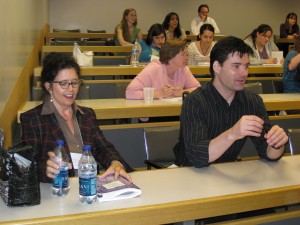
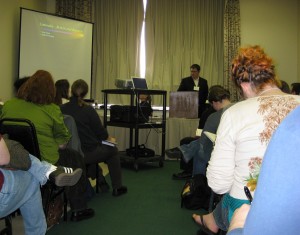

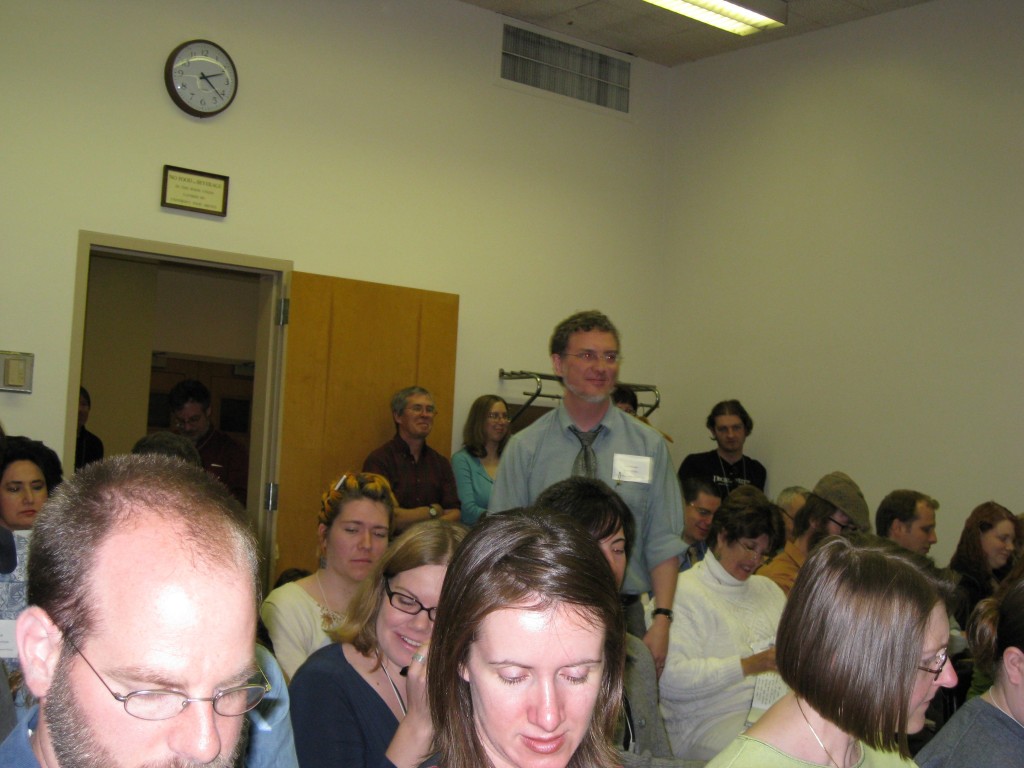
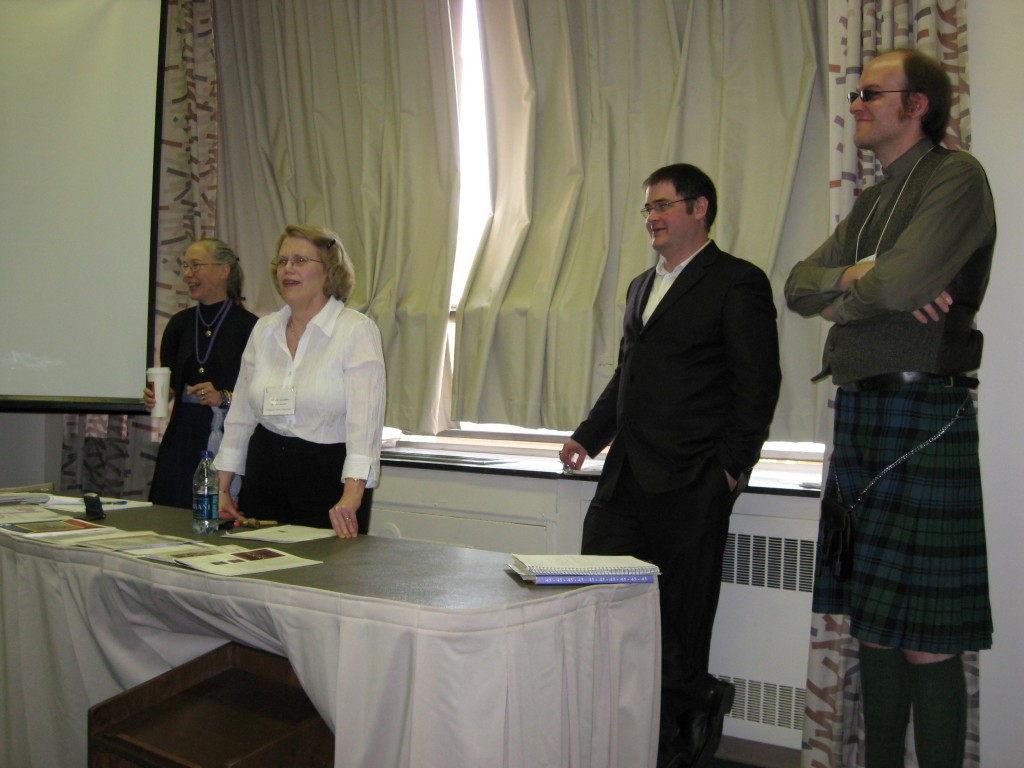
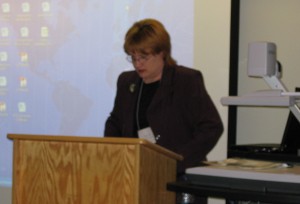
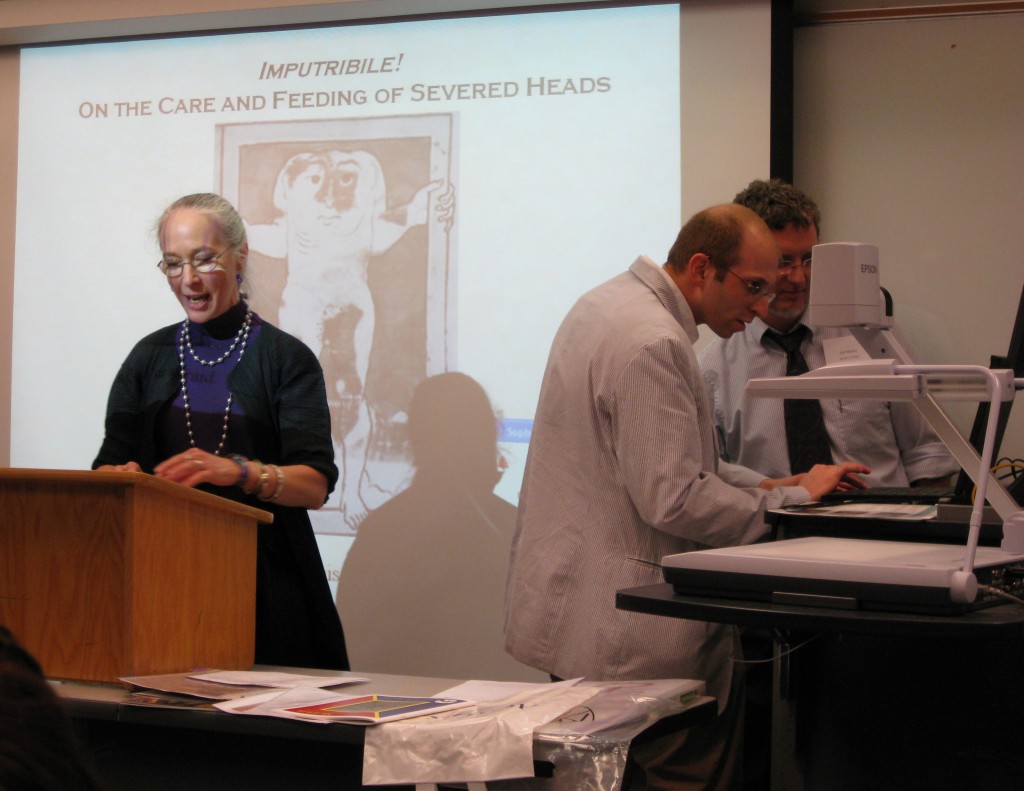
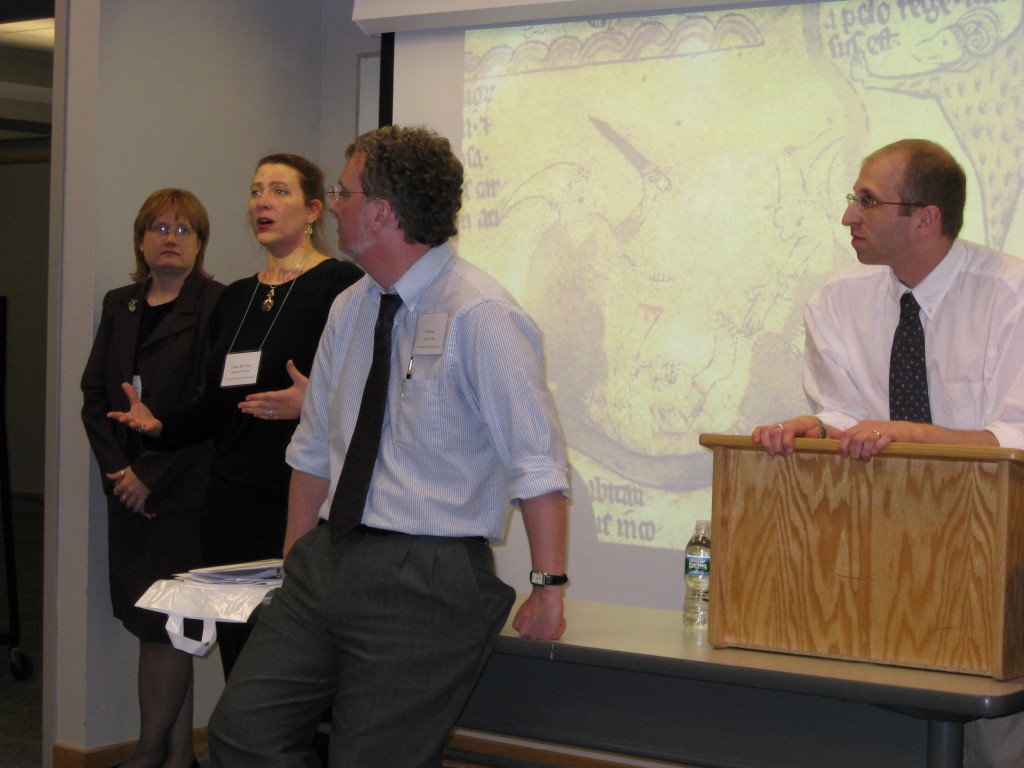
We thank Larissa Tracy for generously providing photographs for these events. A lovely find from her photographic archives!